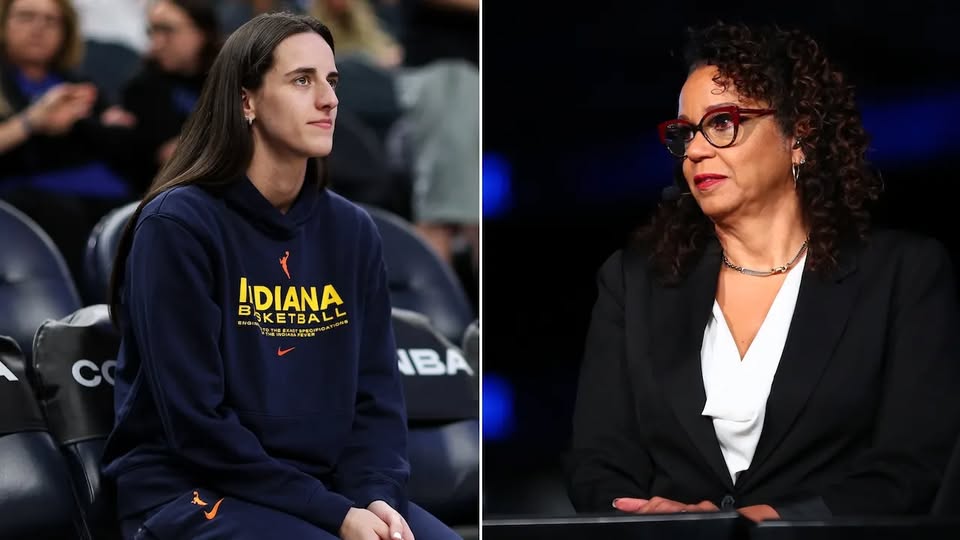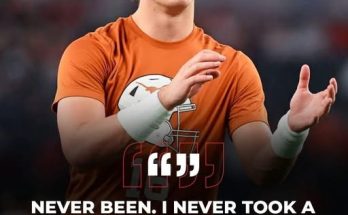An ESPN analyst is currently navigating intense public backlash after describing the Indiana Fever as “more dangerous” when key players are sidelined. The comment, delivered during a recent broadcast, set off shockwaves across social media, prompting a widespread debate over the implications of such a statement.
During the postgame breakdown of the Fever’s latest matchup, the analyst suggested that their absence creates unpredictability in the team’s performance. While perhaps intended as a tactical observation, many critics have interpreted the remark as dismissive—or even disrespectful—of the women who don’t take the court. As the clip circulated, responses ranged from disbelief to outright fury, with fans and pundits demanding a retraction.
Critics argue the phrasing reveals an undercurrent of bias. By labeling the Fever “dangerous” only when starters aren’t present, the sentiment seems wrapped in condescension, implying the team is only threatening in chaos. Social media posts highlighted the irony: a team stacked with talent and veteran presence—like Caitlin Clark, Kelsey Mitchell, and NaLyssa Smith—shouldn’t be relegated to “dangerous” only when so-called weaknesses emerge. For many, the comment undermined the professionalism and skill of the roster.
Adding fuel to the fire, several former players quickly weighed in. Former Fever guard Briann January tweeted that the comment “doesn’t reflect the grit and growth we’ve built.” Another veteran noted that the team’s depth means front‑court injuries don’t fundamentally alter their identity—yet the analyst’s words suggested the opposite. The criticism isn’t limited to the team’s circle; journalists covering the WNBA have cited the remark as part of a broader pattern in sports media, where male analysts underplay women’s leagues or frame narratives through uncomfortable angles.
In response, ESPN issued a brief statement acknowledging the commentary had sparked “valuable dialogue on how we talk about women’s basketball.” The network emphasized that the remark does not align with their editorial standards and is reviewing internal protocols regarding live analysis. While a full apology has not yet been issued, ESPN stated they take viewer concerns seriously and will strive to ensure future coverage better respects the league.
Back on the court, the Fever are ignoring the drama and focusing on execution. Head coach Christie Sides emphasized the team’s concentration on performance and unity. “We’re not defined by someone on the outside’s comments,” she said, “but by our work ethic and what happens in that locker room.” Players echoed that sentiment: Caitlin Clark called it “noise—fuel for us to keep improving.” Teammates seemed galvanized, using the controversy as motivation heading into upcoming matchups.
The analyst’s reputation has taken a hit. Sponsors associated with segments have started distancing themselves, corporate partners flagging concerns over brand association. Within ESPN, chatter suggests the analyst could face consequences ranging from a formal reprimand to temporary removal from assignments. The incident shines a light on the broader issue of accountability in sports media, where every word—especially those that can be construed as diminishing women’s sports—carries weight.
The backlash also revived a longstanding debate about how women’s sports are discussed. Advocates contend that terminology must be scrutinized: calling a shorthanded team “dangerous” can perpetuate harmful stereotypes if not supported by context. It risks framing the narrative around sensationalism rather than skill or strategy. Invoking urgency and volatility may garner attention—but at what cost? Critics believe the priority must be accuracy and respect.
On social platforms, hashtags like #RespectTheFever and #FlipTheNarrative have gained traction. One viral post pointed out that “dangerous doesn’t apply to resilience—courage does.” Others stressed the importance of recognizing women’s basketball for its competitive excellence, not as a storyline vulnerable to sensationalism. The debate has reached classrooms and newsrooms alike, with educators using the incident as a case study in gender bias and media framing.
In the midst of controversy, the NBA and other organizations have taken note. Some allies within the basketball world have publicly affirmed the WNBA’s legitimacy and demanded more intentional language from broadcasters. With the upcoming men’s leagues set to amplify, these voices may shape how women’s games are covered moving forward.
This episode comes at a delicate moment for the Fever. Riding a rebuilding wave and surrounded by hope, their progress gets scrutinized—sometimes unfairly. The analyst’s comment, though ostensibly about tactics, struck a nerve because it symbolized a recurring issue: the tendency to trivialize women’s performance. As attention turns to their next game, the team appears more focused than ever on proving their critics wrong—not just with wins, but with poise and conviction.
For sports media, the incident is a reckoning. It underscores the need for heightened awareness around language, context, and the power dynamics at play in how female athletes are portrayed. For fans, it’s sparked a conversation that transcends one remark—prompting reflections on how respect is earned, granted, and communicated.
One thing is crystal clear: as long as the Indiana Fever continue to build their legacy, narrow or dismissive labels won’t stick. And if the backlash teaches sports media anything, it’s that words matter—especially when describing women who compete relentlessly, inspire fans, and define what “dangerous” truly means on the court.


